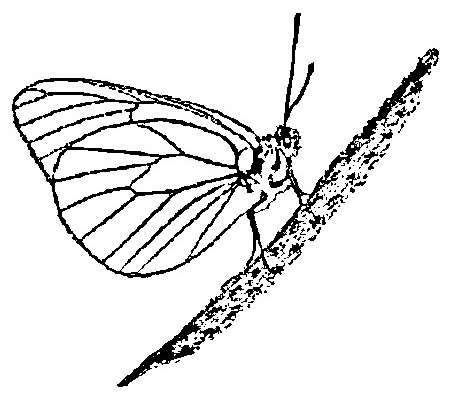|
90. Apatura iris (Linnaeus, 1758) / Purple emperor / Nymphalidae – Danainae
NL: grote weerschijnvlinder / D: Groβer Schillerfalter / F: grand mars changeant
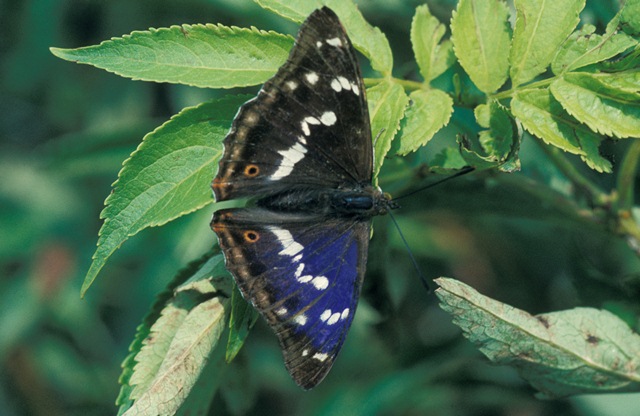 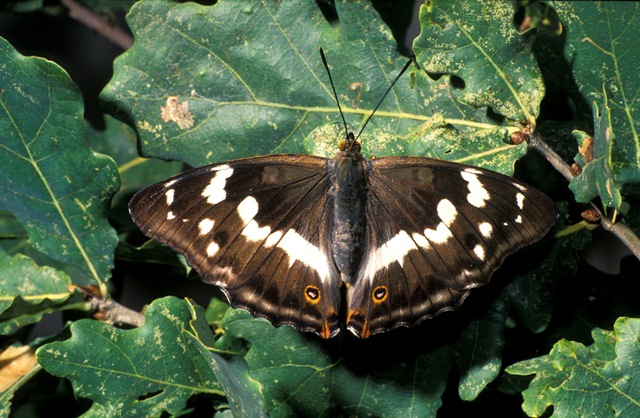 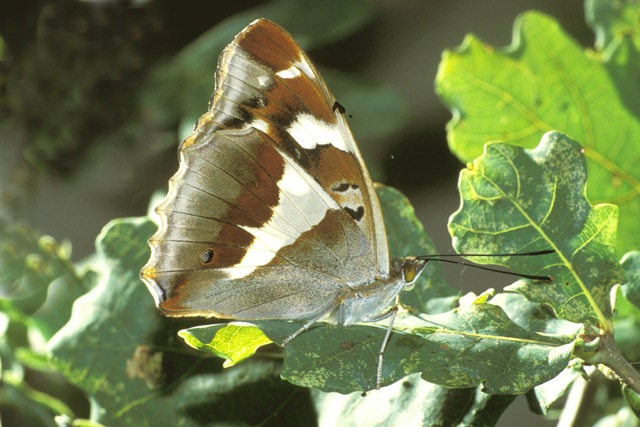
Photographs: Frits Bink ©.
Large or very large, wing length male 34 (31-38) mm, female 38 (36-40) mm. In the Benelux this woodland species is more widely spread than the related species Apatura ilia and occurs in the Netherlands up to the province Drenthe.
Butterfly is on the wing from end-June until early-August and peaks early-July. The species is known from maritime and continental climates, amplitude 6 to 16. Required heat sum 700°d, tolerated maximum 1800°d, corresponding climate windows 23 and 35 weeks.
In England the purple emperor is a very well-known species and a lot of information has been published which have revealed the secrets of the life of this magnificent butterfly.
Ecological characteristics
Behaviour over time
Overwintering: larva in third instar, about 10 mm in length, cryptic in colour, hidden in the fork of two twigs or branches.
Reproduction: oviposition starts after 7-9 days when the body contains 50 (40-60) eggs, potential production 3 times as much. There is a record of 427 eggs produced by a single female in a breeding experiment by Harold Short.
Larval feeding periods: in summer about 40 days from early-August until end-September, next spring another 40 days from end-April until mid-June.
Generations: one.
Spreading of risk: the long lifetime and scouting behaviour of the butterfly will ensure a good dispersion in time and space.
Life cycle: egg 14 (8-18) days; larva 43-47 weeks; pupa 18 (13-22) days.
Life span of adult: long, 4 weeks.
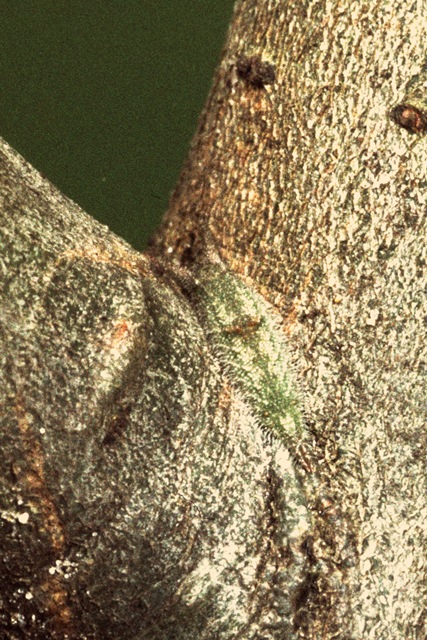 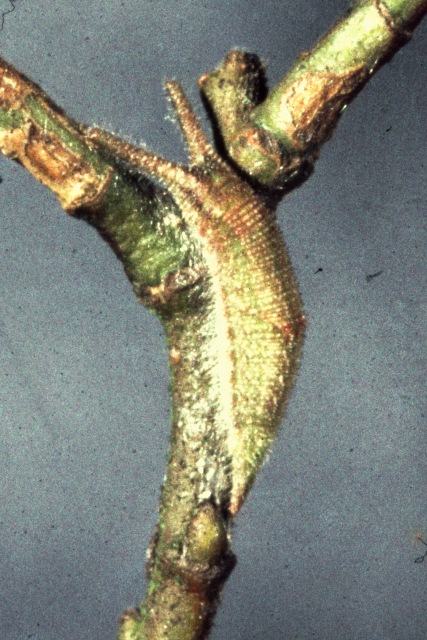 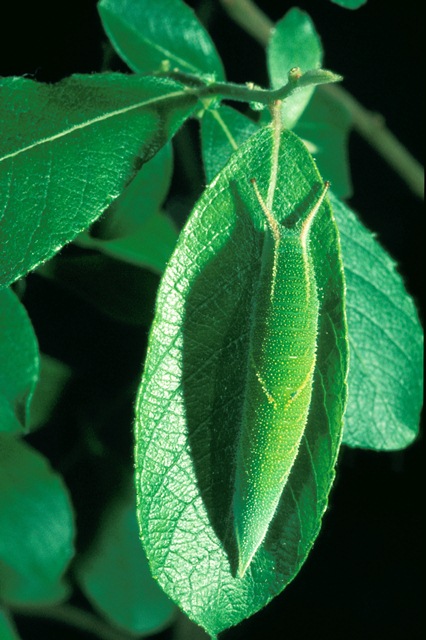
Photographs: Frits Bink ©.
Behaviour in space
From stay-at-home to migrant: stay-at-home, spatial requirement considerable.
Finding a mate: male perches on its master tree.
Orientation in the landscape: wood, gradient between open field and wood, prefers the vicinity of brooks or pools.
Oviposition: on the upperside of mature leaves.
Defence
Threats from other organisms: camouflage and cryptic behaviour in larval stage.
Threats from the environment: vulnerable to heat and drought.
Feeding habits
Adult: liquid from rotten material, dung and carrion.
Larva: when young it eats in a special pattern leaving the midrib, changes colour in autumn from green into brown, leaving the leaf just before it drops. When young, the larva prefers only old leaves, in spring it likes young shoots.
Larval foodplants
Plant species: Salicaceae, e.g. Salix aurita, S. caprea, S. cinerea.
Journal
Rearing experiment based on specimens from England provided by Harold Short, Esher:
5 November 1981: received two larvae.
Overwintered in fridge.
11 February 1982: taken out of the fridge.
22 February: temperature reached 25°C, larva became active, ate a little and changed its colour to green.
7 March: larva in moult L3-4, liked a sunny place.
19 March: larva in moult L4-5.
27 March: larva nearly fully grown, liked to sit in the sunshine.
4 April: larva pupated.
26 April: hatched, male.
Table 90-1. Results of dissections

Table 90-2. Collection and observation localities
EST, Viruna, 58° 28’ 51”N – 23° 58’ 32”E; 5 July 1999.
F, Vosges, Grand Ballon, 1424 m, 47° 54’ 04”N – 7° 05’ 54”E; 26 July 1983 (♂ wanderer).
F, Vosges, Hohneck, 1283 m, 48° 02’ 03”N – 7° 02 ‘ 27”E; 23 July 1983 (♀ wanderer).
F, Vosges, le Steinberg, 1150 m, 47° 59’ 27”N – 7° 06’ 40”E; 21 August 1984 (♂ wanderer).
F, Lorraine, Lion-devant-Dun, 300 m, 49° 23’ 40”N – 5° 14’ 03”E; 12 June 1984 (larvae), 10 July 1985.
F, Lorraine, Rupt devant Saint-Mihiel, 280 m, 48° 53’ 01”N – 5° 24’ 10”E; 28 June 2006.
F, Pagny-la-Blanche-Côte, 322 m, 48° 32’ 01”N – 5° 44’ 14”E; 7 July 2006 (♀ ovipositing).
GB, Oxford, Great Wood, 51° 41’N – 0° 55’W; 20 July 1981.
NL, Schuitwater, 51° 28’ 35”N – 6° 07’ 43”E, 18 June 2000.
Fig. 90-1. Apatura iris, phenogram adapted from Fichefet et al. 2008: 165.
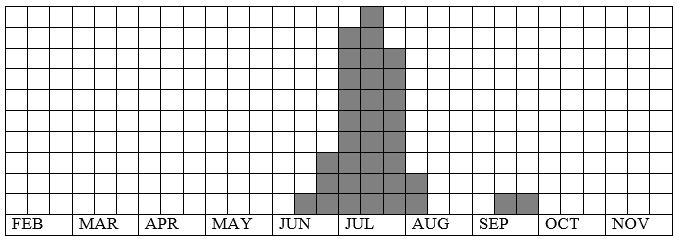
Fig. 90-2. Apatura iris, habitat characteristics.
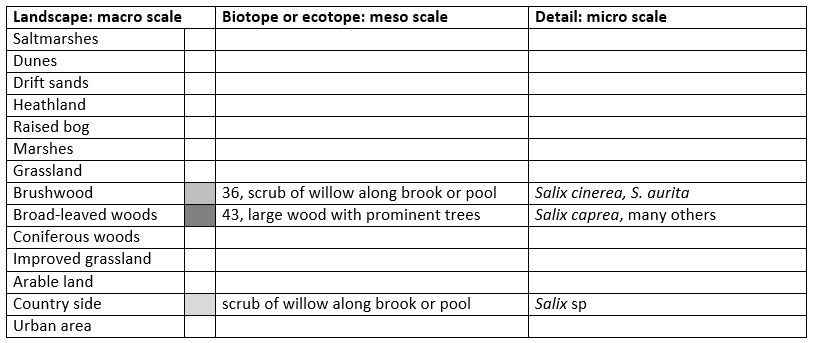
Fig. 90-3. Apatura iris, climate matrix, heat-sums 700 - 1800°d.
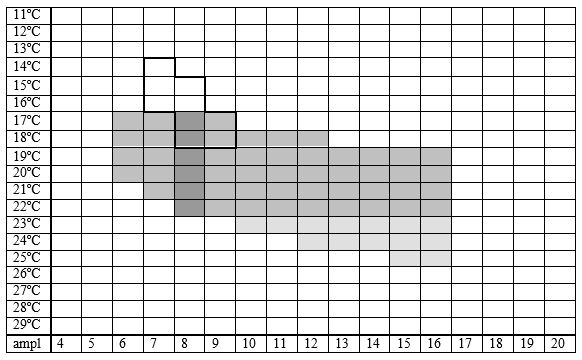
|

